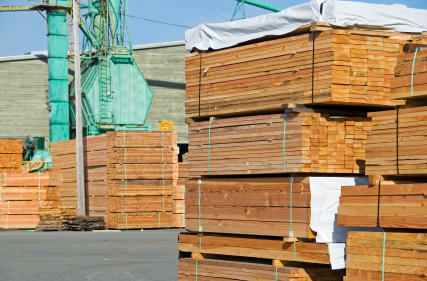The rise of pallets as the ubiquitous, and often invisible, foundation of the global shipping industry began just prior to World War II with the introduction of the forklift. WWII itself skyrocketed the use of pallets as it became necessary to move and store large shipments of war supplies. Since that time, people have been trying to come up with a workable alternative to wood pallets and they have, as of yet, failed to do so. Wood pallets are the least expensive and most durable shipping platform available.
The Wood Pallet Alternatives
There are two main alternatives to wood pallets: corrugated pallets and plastic pallets.
Corrugated pallets may be less expensive, but they are weaker and less durable than wood pallets. They come with limitations on weight, shipping conditions and storage conditions that wood pallets do not. For example, corrugated pallets must be stored inside, protected from the elements, in order to remain structurally sound.
Plastic pallets do not suffer from the same issues with strength and durability as do corrugated pallets. They are, however, very expensive. A typical wood pallet will cost around $12, while a plastic pallet costs $35. The price of plastic pallets often necessitates the use of a closed loop distributor system, ensuring the return of pallets from the receiver to the distributor. This can drastically restrict shipping options and the movement of goods. In addition to the cost, plastic pallets are extremely flammable; this combined with the warehouse atmosphere creates insurance concerns.
From the Earth to Your Warehouse and Back
The reputation of plastic being a recyclable material has been bought by the billions of marketing dollars commanded by the plastics industry. Plastic can only be recycled so many times before it ends up in a landfill, and the process of making and recycling plastic is highly toxic. The wood used in pallets, on the other hand, is a completely renewable resource. Cutting down trees is easily labeled as bad for the environment, but this is not necessarily true. Harvested trees are replanted and with every passing year we understand more and more about how to responsibly reforest areas used for lumber production. Further, pallets are made from low-grade wood. When trees are harvested for furniture, construction materials and other products, the part of the tree that cannot be used is sent to pallet manufacturers. This means that every part of the tree is utilized. At the end of a pallets life, when disposed of properly, it is recycled into mulch and used to nourish soil.
Despite attempts to come up with better alternatives, wood pallets are still the best option available in terms of both price point and durability. They out-perform corrugated pallets and are less expensive and more environmentally sustainable than plastic pallets.
